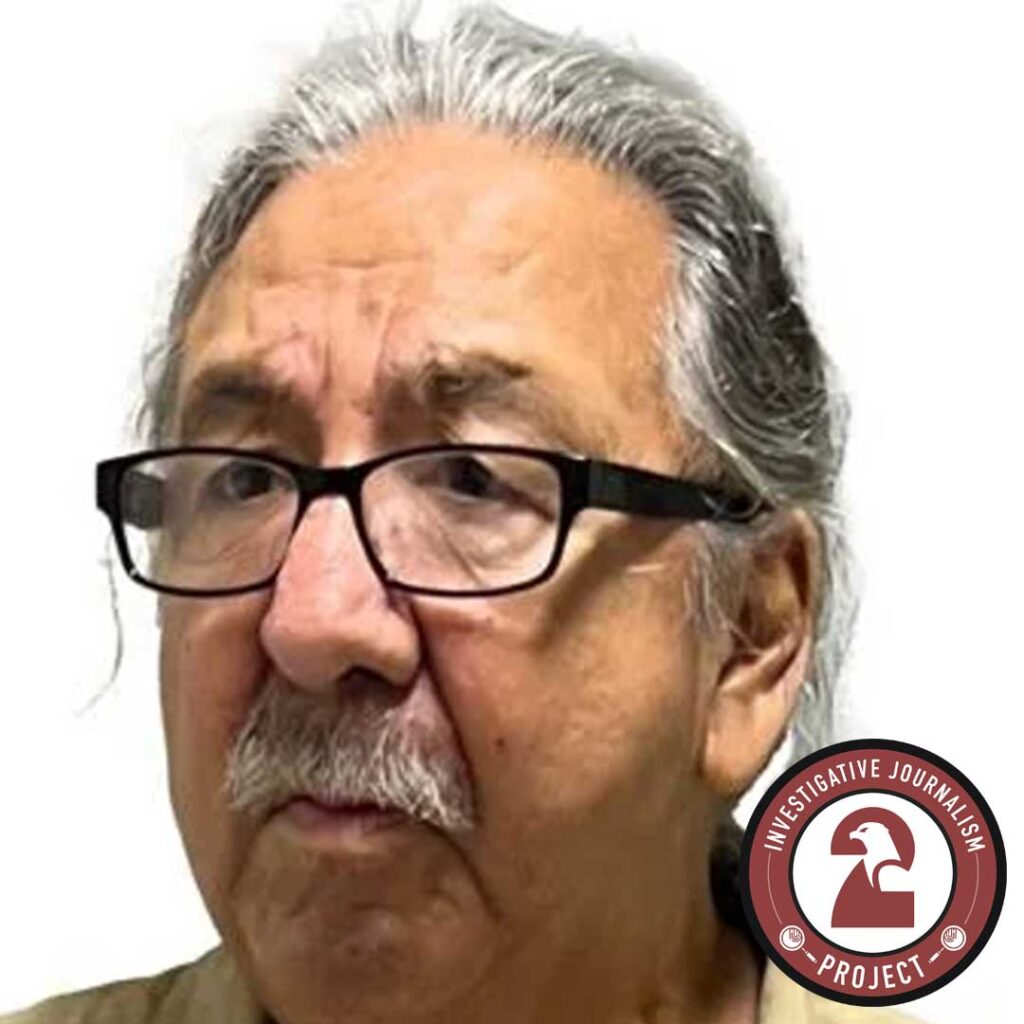Author interviewed Peltier behind bars 25 years ago.
By Lee Williams
Former President Joe Biden commuted the life sentence of American Indian activist and convicted double murderer Leonard Peltier just minutes before leaving the White House Monday. Peltier was in federal prison for murdering FBI Special Agents Jack R. Coler and Ronald A. Williams on the Pine Ridge Indian Reservation nearly 50 years ago.
Peltier, who is now 80 and suffering poor health, said “It’s finally over. I’m going home,” according to an advocacy group. Peltier is an enrolled member of the Turtle Mountain Chippewa Tribe in North Dakota.
Biden mentioned Peltier’s commutation briefly in a written statement explaining his commutation of two other officials. “I am also commuting the life sentence imposed on Leonard Peltier so that he serves the remainder of his sentence in home confinement,” the statement reads.
The FBI has long stressed Peltier’s guilt and fought hard against any parole or commutation of his life sentence.
“Over the last 45 years, no fewer than 22 federal judges have evaluated the evidence and considered Peltier’s legal arguments. Each has reached the same conclusion: Peltier’s claims are meritless, and his convictions and sentence must stand,” FBI Director Christopher Wray said in a 2024 letter opposing Peltier’s parole request.”
Wray resigned from the FBI on Monday the same day Biden left office. Biden is not the first president to be asked to release Peltier.
In June 2017, then-President Barrack Obama denied a clemency request for Peltier from Amnesty International USA’s executive director Margaret Huang, who said in a letter that Peltier has always maintained his innocence.
“The families of the FBI agents who were killed during the 1975 confrontation between the FBI and American Indian Movement (AIM) members have a right to justice, but justice will not be served by Peltier’s continued imprisonment,” Huang said in a 2017 press release.
Peltier interview
Twenty-five years ago, I was a young hard-news reporter at the Argus Leader, the Gannett-owned newspaper in Sioux Falls, South Dakota.
I was contacted by local and regional FBI officials about a month before the 25th anniversary of Peltier’s crimes. To be clear, they wanted a story about the murder of their two special agents about as bad as they wanted Peltier to remain in custody. The Argus Leader covered Indian Country very well, so the FBI believed we would be a good choice to tell their story.
Senior FBI agents gave me copies of Peltier’s files, which included autopsy photos of the slain special agents, Ronald A. Williams, (no relation) and Jack R. Coler.
“We have been bad in the past about getting our message out,” Chip Burrus, then the FBI’s assistant special agent in charge of Indian Country, told me.
About a week after meeting with FBI officials I interviewed Peltier at the U.S. Penitentiary at Leavenworth, Kansas. The FBI officials, I recall, weren’t too very happy about the interview.
I spoke to Peltier in a break room. He was seated next to a humming soda machine, which made it somewhat difficult to hear his answers.
The first thing that struck me was that Peltier was incredibly experienced at giving interviews. A correctional officer later told me he averaged one or two per week. A Japanese film crew had recently spoken to him for an in-depth project.
The second thing that I realized was that Peltier knew guns, and he knew them very well.
On June 26, 1975, Peltier said he was in an American Indian Movement (AIM) encampment known as Tent City, in the woods about three miles southeast of Oglala, South Dakota.
Tensions were high, Peltier said. He and his cohorts expected an assault from the tribal government, which had a well-armed paramilitary unit known as the Guardians Of the Oglala Nation, or GOONs.
“We had heard rumors of a possible GOON assault,” Peltier said. “We were aware of other threats. Tensions were high. I then heard bullets zinging and hit the ground.”
Taking up a surplus British .303 Lee-Enfield rifle and a 30-30 carbine, Peltier claimed he began shooting toward the source of the incoming rounds.
“When we first started receiving gunfire, I fired that way, but I didn’t see anybody. I never shot those agents,” he told me. “I was never shooting specifically at them.”
Of course, the FBI investigation revealed a different set of events.
Special Agents Williams and Coler were looking for a robbery suspect. They followed a red and white Chevrolet Suburban into a shallow depression, radioed that it had stopped, and immediately reported coming under fire.
“If you don’t get here quickly, we’re dead men,” Williams yelled into the radio. It was his last transmission.
At least seven rifles from three positions formed a deadly crossfire. A total of 125 bullet holes were found in the car.
Both agents were overcome by their wounds, but alive. Peltier walked 200 yards to where the agents lay, executing them with shots to the head from his AR-15.
Peltier denied ever having used the AR-15, but forensic experts said the fatal shots were fired from that weapon. Investigators found one shell casing in the trunk of Coler’s car that extractor tests proved came from Peltier’s AR-15.
Agents recovered 114 spent shells of .223 ammunition from that area. They concluded that the shells came from the same AR-15.
Peltier told me he never approached the wounded agents: Mister X did.
“I know I’ve said in the past who he is. I said it out of anger. I don’t know who it is, either Mr. X, Y or Z,” he claimed.
Peltier said he left the area on foot. “After we crossed a creek, we knelt down with a pipe and prayed. I saw the shadow of an eagle, heard the wings flapping, and followed him out of there,” he claimed.
The FBI and ultimately a jury disagreed.
“Peltier was one of three individuals who walked up to the wounded and helpless agents,” Special Agent Burrus told me. “He had the weapon (the AR-15), he was ID’d at the scene. The facts clearly indicate he’s good for the crime.”
The rifle was found three months later, in an RV that had been intentionally burned. The FBI claimed it matched the weapon that killed the two special agents.
In February 1976, Peltier was cornered by the Royal Canadian Mounted Police and arrested.
One former FBI special agent told me Peltier’s story was “full of inconsistencies. First, he said he was never there. Then he said he was there. Then he said he was at Tent City. Then the stuff about Mr. X.”
Peltier told me his story hasn’t changed.
“I might tell it a little different but look at it. My story hasn’t changed,” Peltier said, nearly 25 years ago.
Takeaways
Peltier is now incarcerated at the federal prison in Sumterville, Florida. It’s expected his home confinement program will begin next month.
Biden has pardoned and lightened the sentences of hundreds of other criminals accused of serious crimes, but the FBI has said nothing and has taken no action. Only Peltier’s release from prison got the FBI to act officially.
Perhaps if the FBI and several other federal law enforcement agencies had done what’s right for the past four years rather than what made Biden and the White House staffers happy, things would be different.
Bottom line: Neither Special Agents Williams nor Coler should have been murdered. They were both good young men, and their killer should still be in prison. Despite what the FBI has become today, Joe Biden should never have allowed their murderer, Leonard Peltier, to walk out of a prison’s front gate, a free man.


